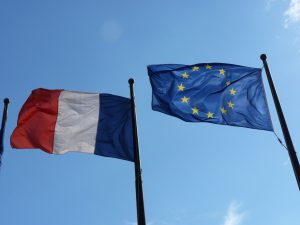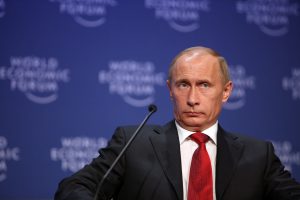It is a country of 90 million inhabitants, bordered by Iraq and Turkey to the west, the Gulf monarchies to the south, Armenia, Azerbaijan and Turkmenistan to the north, and Afghanistan and Pakistan to the east. Bursting with oil and half of its population made up of ethnic or religious minorities, Iran is surrounded by conflict zones, open wars and Sunni states with which this cradle of Shiism has always been in competition.
The ancient Persia against which Muhammad unified the Arabian Peninsula in the new faith of Islam has thus become a time bomb. There is every reason to fear that the collapse of its regime will soon cause such internal upheaval that will eventually affect the entire region.
The danger is immense, and the only way to avoid it would be for the Iranians to organise a political transition from the dying theocracy to the regime of freedoms to which they so massively aspire.
This is what happened in Spain between the end of Francoism and the establishment of democracy. Of course, Europe at that time was nothing like the Middle East of today. Spain was at peace, Iran is not, but half a century apart, the Iranians have the same asset as the Spanish used to have.
Like the Spanish, they have the advantage that even within their dictatorship, there has been a fringe group of people who have broken with the orthodoxy of the system in place, reformers who want real change or who are clear-headed enough to see the need for it.
In Spain, these were mainly technocrats trained in the United States or in European capitals. In Iran, these men, and sometimes women too, all believed in the Islamic revolution, which some of them had defended to the point of participating in mass repression, but whose corruption, blindness and regional adventurism they could no longer tolerate.
Many discreetly marked their difference in Parliament, in the press, in the cultural life or even in the highest echelons of the apparatus. Others broke with the theocratic establishment by standing, as declared reformers, for elected office, such as mayor, member of parliament or president of the republic.
Those whose candidacies were not banned by the theocratic authorities thus became opponents from within the regime, quickly marginalised and completely paralysed, such as Mohammad Khatami, the reformer elected and re-elected president in 1997 and 2002, or even placed under house arrest, such as Mir Hossein Moussavi, who ran against the ultra-conservative incumbent Mahmoud Ahmadinejad in the 2009 presidential election, which was rigged in Ahmadinejad’s favour.
So, several batallions of reformist cadres, both declared and hidden, exist in Iran. Their numbers vary considerably from one administration to another, but they can even be found within the clergy. This situation is very similar to that revealed in the USSR by Mikhail Gorbachev’s Perestroika, and these men – let us hope, fingers crossed – could for a time play the role of successors that should normally fall to organised opposition forces but which have for a long time ceased to exist.
In this country of a once vibrant political life, all parties and even political movements have been destroyed by the mass arrests, executions and assassinations carried out by this ruthless theocracy.
Apart from reformers from within the regime, there are currently no forces ready to take power, but that does not mean that there are no voices of dissent in Iran.
Artists, lawyers and writers are among the many figures admired for their courage in standing up to the mullahs. These dissenters are not the only ones who will have a say in the debates to come. The battles that have ceaselessly challenged the Islamic Republic for some three decades have also trained countless men and women in the fight for freedom.
Already in their fifties, the oldest among them experienced the mobilisations for the election and re-election of Mohammad Khatami. The youngest took to the streets in 2022, after the death of a young woman murdered by regime militiamen for not covering herself sufficiently with a veil. This marked the rise of the Woman, Life, Freedom movement, and in the meantime there was the Green Revolution of 2009, the huge protests against the rigged re-election of Mahmoud Ahmadinejad.
Each time, the regime managed to regain control through increasingly fierce repression. In the past year alone, the mullahs have carried out more than 500 executions, but this constant struggle between the real country and the legal country has made Iran a total paradox. While the dictatorship is so fierce and the republican institutions are totally controlled by the religious institutions embodied by the Supreme Leader, there is no other country in the world where so many citizens have so much political experience.
Iran is the par excellence country of politically well-informed, well-trained citizens. To avoid bloody chaos, all that is needed is for the most respected reformers and dissidents to call together for a peaceful transition allowing for the formation of a political spectrum and the organisation of free elections. Time is running out. It is a matter of days.
(Photo: Geoff Livingston @Flickr)




